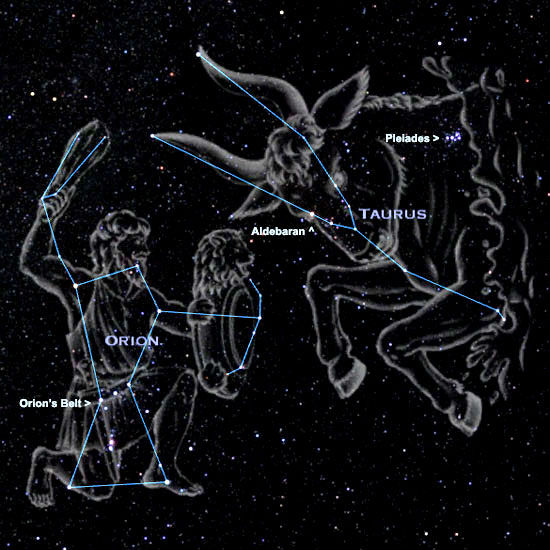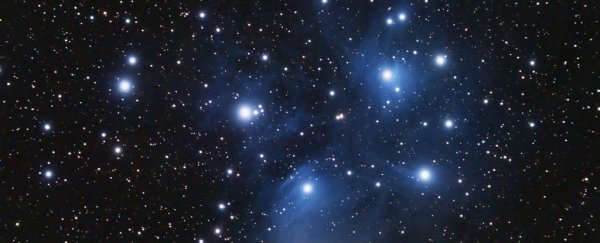Just when you thought skywatching couldn't get any better this month - the Leonid meteor shower put on quite a show for us earlier this week, in case you missed it - space continues to deliver, this time with the 'Seven Sisters' themselves, the Pleiades star cluster.
Located in the Taurus constellation 430 light-years away, Pleiades is one of the closest star clusters to Earth, which means it's visible to the naked eye from almost any position on the globe. Dominated by super-luminous stars glowing an extremely hot shade of blue, Pleiades is one of the most beautiful things you can see in the night sky without a telescope, and on the night of Friday 20 November, it's set to reach its highest point in the sky before dipping back down beyond the horizon.
According to Bruce McClure at EarthSky.com, the Pleiades can be seen from as far north as the north pole, and even farther south than the southernmost tip of South America, and it will be shining from dusk till dawn every night through till the end of November.
If you're keen on spotting it, you just need to locate the constellation of Orion, which shouldn't be too tricky, because it's one of the most conspicuous and easily recognisable constellations you'll see in the night sky. You know that amazingly perfect line of three stars you see when you look up? That's Orion's Belt - which means you're right on track. Great job so far.
Run your eyes in a straight line up through Orion's belt, and don't stop still you find another constellation. This is the Taurus constellation, and you should be able to find the large "V" shape that makes up the bull's face. It contains a particularly bright star, called Aldebaran, which acts as one of his flaming eyes. "A bit past Aldebaran, you'll see the Pleiades cluster, which marks the Bull's Shoulder," says McClure.
You can see it in the image below:
 bibliotecapleyades.net
bibliotecapleyades.net
If you can find yourself a nice dark spot away from the light of the city, you should be able to make out six or seven of the Pleiades's brightest stars among a duller cloud of stars numbering in the hundreds. Born from the same dust cloud just 100 million years ago, these stars have enjoyed fame in both science and mythology because of their unusually tight and bright arrangement.
"This gravitationally bound cluster of several hundred stars looms some 430 light-years distant, and these sibling stars drift through space together at about 25 miles (40 kilometres) per second. Many of these Pleiades stars shine hundreds of times more brightly than our Sun," says McClure.
I don't know about you, but that sounds like something I want to see for myself. While the best time to see the Pleiades is right now, because they shine all night long, they'll be visible all the way through to April next year.
